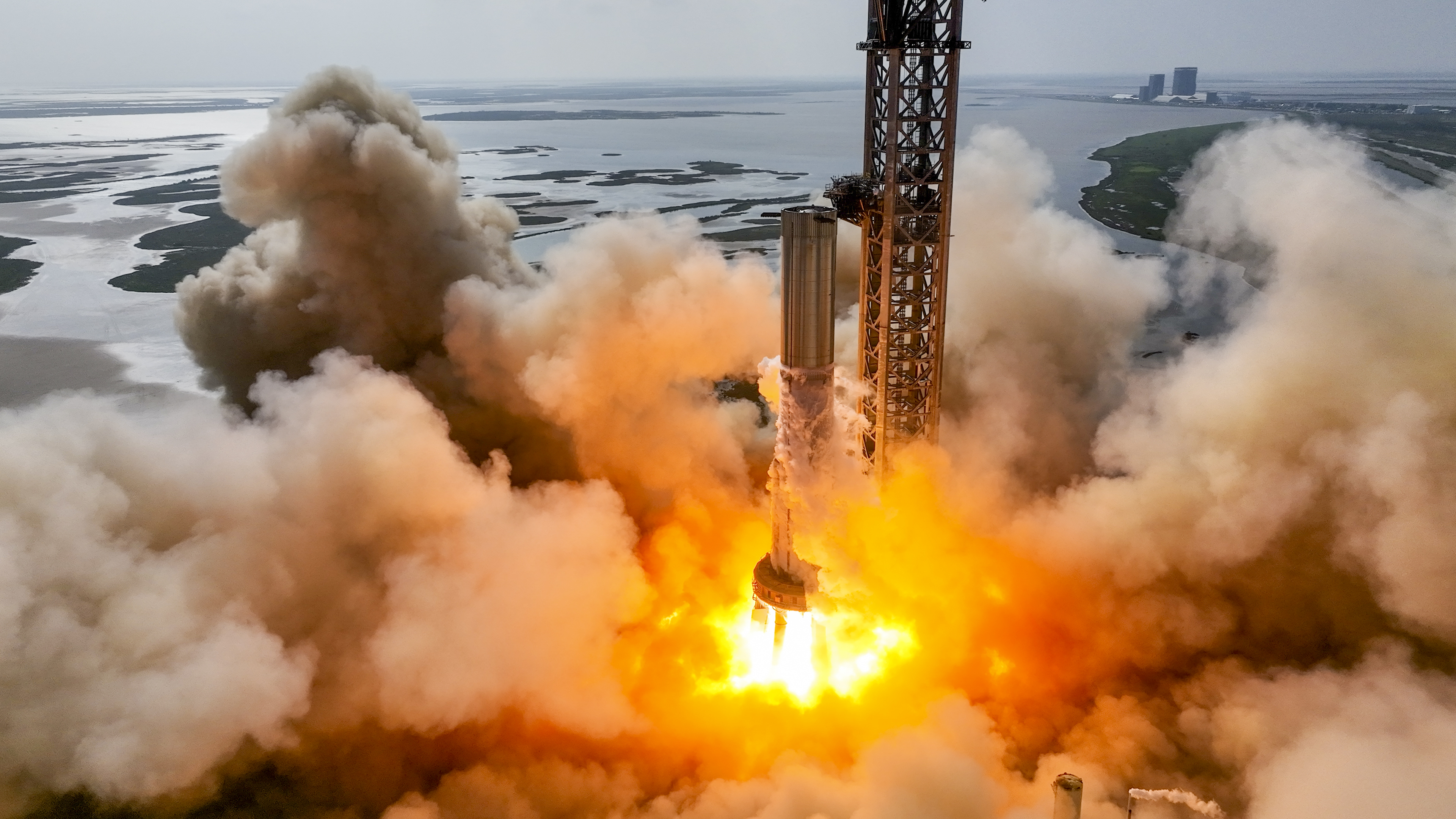SpaceX continues to prep its Starship Mars rocket for its first-ever orbital test flight, which could be coming soon.
During a "static fire" test today (Nov. 29) at its South Texas facility, SpaceX ignited multiple Raptor engines on Booster 7, a prototype of Starship's first-stage Super Heavy rocket.
The static fire occurred at 2:42 p.m. EST (1942 GMT) and lasted for 13 seconds. Video captured by NASASpaceFlight and Rocket Ranch Boca Chica showed the test to be a powerful one, suggesting it involved a healthy proportion of Booster 7's 33 Raptors. That turned out to be the case; shortly after the test, SpaceX confirmed via Twitter that Booster 7 lit up 11 of its engines.
Related: SpaceX's Starship Super Heavy booster test-fires record 14 engines (video)

Wednesday's test was the first static fire for Booster 7 since Nov. 14, when the huge vehicle lit up 14 Raptors.
Shortly after that trial, SpaceX founder and CEO Elon Musk said that the company planned to perform just one or two more static fires with Booster 7 before launching an orbital test flight — the first ever for the Starship program.
That orbital mission will likely employ Booster 7 and Ship 24, a prototype of Starship's 165-foot-tall (50 meters) upper stage. The upper stage is powered by six Raptors; Ship 24 has already ignited all of its engines, during a Sept. 8 static fire.
Get the Space.com Newsletter
Breaking space news, the latest updates on rocket launches, skywatching events and more!
A successful orbital flight will make Starship the most powerful rocket ever to fly. That title is currently held by NASA's Space Launch System megarocket, which debuted on Nov. 16, kicking off the agency's Artemis 1 mission.
SpaceX is developing Starship to take people and cargo to the moon and Mars. NASA is already a customer; the agency selected the huge vehicle to make at least two crewed moon landings for its Artemis program, which aims to establish a long-term human presence on and around the moon by the end of the 2020s.
Editor's note: This story was updated at 4:35 p.m. EST to state that SpaceX confirmed that 11 Raptors were involved in the static fire.
Mike Wall is the author of "Out There" (Grand Central Publishing, 2018; illustrated by Karl Tate), a book about the search for alien life. Follow him on Twitter @michaeldwall. Follow us on Twitter @Spacedotcom or on Facebook.
Join our Space Forums to keep talking space on the latest missions, night sky and more! And if you have a news tip, correction or comment, let us know at: community@space.com.

Michael Wall is a Senior Space Writer with Space.com and joined the team in 2010. He primarily covers exoplanets, spaceflight and military space, but has been known to dabble in the space art beat. His book about the search for alien life, "Out There," was published on Nov. 13, 2018. Before becoming a science writer, Michael worked as a herpetologist and wildlife biologist. He has a Ph.D. in evolutionary biology from the University of Sydney, Australia, a bachelor's degree from the University of Arizona, and a graduate certificate in science writing from the University of California, Santa Cruz. To find out what his latest project is, you can follow Michael on Twitter.
-
vitiral "Wednesday's test was the first static fire for Booster 7 since Nov. 14"Reply
Today is Tuesday right? -
billslugg Yes, looks like they got the day wrong. Can't wait to see all 33 engines fire at once.Reply -
danR S t i l l says "Wednesday's test...", day after previous commentsReply
Shows how interested space · ¢om is in these posts. -
p3orion If you're going to cut-and-paste text like that last paragraph verbatim from the audio of SpaceX videos, you should probably credit it to them.Reply









